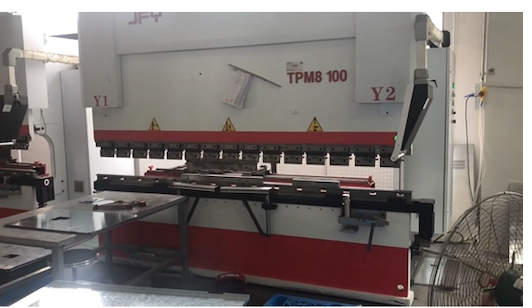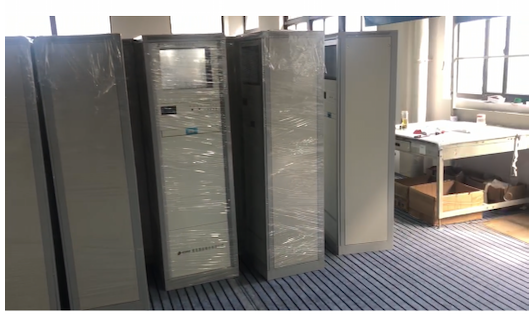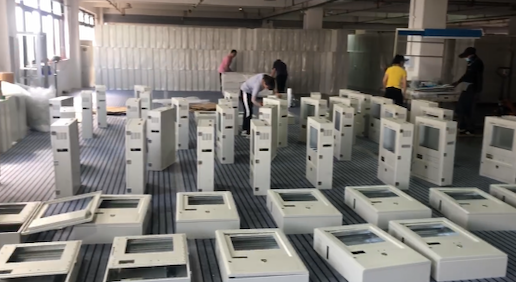By Andy from Baiyear factory
Upated November 3, 2022

In the process of sheet metal processing, the processing technology is an important document to guide sheet metal processing. If there is no processing technology, there will be no standard to follow and no standard to implement. Therefore, we must be clear about the importance of sheet metal processing technology, and conduct in-depth research on the processing technology during sheet metal processing to ensure that the processing technology can meet the actual operation of sheet metal processing, meet the actual needs of sheet metal processing, and fundamentally improve Sheet metal processing quality. Through practice, it is found that sheet metal processing is mainly divided into: blanking, bending, stretching, forming, welding and other methods according to different processing methods. In order to ensure the quality of the whole process of sheet metal processing, it is necessary to focus on the processing technology of these processing methods, optimize the existing processing technology, and improve the practicability and guidance of the processing technology.
Labels: sheet metal processing, metal box making
1 Research on the processing technology of sheet metal blanking
From the current method of sheet metal cutting, due to the widespread adoption of CNC equipment and the application of laser cutting technology, sheet metal cutting has changed from traditional semi-automatic cutting to CNC punching and laser cutting. In this process, the main processing points are the size control of punching and the selection of sheet thickness for laser cutting.

For the size control of punching, the following processing requirements should be followed:
1.1 In the selection of the size of the punching hole, the shape of the punching hole, the mechanical properties of the sheet and the thickness of the sheet should be carefully analyzed according to the needs of the drawings, and the size of the punching hole should be left according to the tolerance requirements to ensure that the machining allowance is within the allowable range. within the deviation range.
1.2 When punching holes, set the hole spacing and hole edge distance to ensure that the hole spacing and hole edge distance meet the standard requirements. The specific standards can be seen in the following figure:
For the process points of laser cutting, we should follow the standard requirements. In terms of material selection, the maximum thickness of cold-rolled and hot-rolled sheets should not exceed 20mm, and the maximum thickness of stainless steel should not exceed 10mm. In addition, the mesh parts cannot be realized by laser cutting. .
2 Research on the processing technology of sheet metal bending
In the process of sheet metal bending, there are mainly the following processing technology indicators that need to be controlled:
2.1 Minimum bend radius. In the minimum bending radius control of sheet metal bending, we should mainly follow the following standards:
2.2 Curved straight edge height. When bending sheet metal, the height of the straight edge of the bending should not be too small, otherwise it will not only be difficult to process, but also affect the strength of the workpiece. Generally, the height of the straight edge of the sheet metal folded edge should not be less than twice the thickness of the sheet metal.
2.3 Hole margins on bent parts. Due to the characteristics of the workpiece itself, the opening of the bending part is inevitable. In order to ensure the strength and opening quality of the bending part, it is usually necessary to ensure that the hole margin on the bending part meets the specification requirements. When the hole is a round hole, the thickness of the plate is less than or equal to 2mm, then the hole margin ≥ plate thickness + bending radius; if the plate thickness is > 2mm, the hole margin is greater than or equal to 1.5 times the plate thickness + bending radius. When the hole is an oval hole, the hole margin value is larger than that of a round hole.

3. Research on the processing technology of sheet metal drawing
In the process of sheet metal drawing, the main points of the process are mainly concentrated in the following aspects:
3.1 Control of the fillet radius of the bottom and straight walls of the extruded part. From the standard point of view, the fillet radius of the bottom of the drawing piece and the straight wall should be larger than the thickness of the sheet. Usually, in the process of processing, in order to ensure the processing quality, the maximum fillet radius of the bottom of the drawing piece and the straight wall should be controlled at less than 8 times the thickness of the plate.
3.2 Control of the fillet radius of the flange and side wall of the stretched part. The fillet radius of the flange and side wall of the drawing piece is similar to the fillet radius of the bottom and straight walls, and the maximum fillet radius control is lower than 8 times the thickness of the sheet, but the minimum fillet radius must be Meet the requirements of more than 2 times the thickness of the plate.
3.3 The control of the inner cavity diameter when the tensile member is circular. When the drawing piece is round, in order to ensure the overall drawing quality of the drawing piece, usually the diameter of the inner cavity should be controlled to ensure that the diameter of the inner cavity is greater than or equal to the diameter of the circle + 10 times the thickness of the plate. Only in this way can the circular shape be ensured. There are no wrinkles inside the stretcher.
3.4 The control of the adjacent fillet radius when the extruded part is a rectangle. The fillet radius between the adjacent two walls of the rectangular stretcher should be r3 ≥ 3t. In order to reduce the number of stretching, r3 ≥ H/5 should be taken as much as possible, so that it can be pulled out at one time. So we have to strictly control the value of the adjacent corner radius.
4 Research on the processing technology of sheet metal forming
In the sheet metal forming process, in order to achieve the required strength, reinforcing ribs are usually added to the sheet metal parts to improve the overall strength of the sheet metal. details as follows:
In addition, in the sheet metal forming process, there will be many concave and convex surfaces. In order to ensure the processing quality of the sheet metal, we must control the limit size of the convex spacing and the convex edge distance. The main selection basis should be in accordance with the process standards.
Finally, in the process of processing sheet metal hole flanging, we should focus on controlling the size of the processing thread and inner hole flanging. As long as these two dimensions are guaranteed, the quality of sheet metal hole flanging can be effectively controlled.
5 Research on the processing technology of sheet metal welding
In the process of sheet metal processing, several sheet metal parts need to be combined together, and the most effective way to combine is welding, which can not only meet the connection needs, but also meet the strength requirements. In the process of sheet metal welding, the main points of the process are mainly concentrated in the following aspects:
5.1 The welding method of sheet metal welding should be selected correctly. In sheet metal welding, the main welding methods are as follows: arc welding, argon arc welding, electroslag welding, gas welding, plasma arc welding, fusion welding, pressure welding, and brazing. We should choose the right welding method according to actual needs.
5.2 For sheet metal welding, the welding method should be selected according to the material needs. In the welding process, when welding carbon steel, low alloy steel, stainless steel, copper, aluminum and other non-ferrous alloys below 3mm, argon arc welding and gas welding should be selected.
5.3 For sheet metal welding, attention should be paid to the bead formation and welding quality. Since the sheet metal is on the surface part, the surface quality of the sheet metal is very important. In order to ensure that the surface forming of the sheet metal meets the requirements, the sheet metal should pay attention to the welding bead forming and welding quality during the welding process, from the two aspects of surface quality and internal quality. Ensure that sheet metal welding is up to standard.
If you are interested in sheet metal processing, metal box production, distribution box production, etc., please feel free to contact us, we are looking forward to your inquiry.
Contact:Andy Yang
What’s app : +86 13968705428
Email: Andy@baidasy.com
Post time: Nov-29-2022






